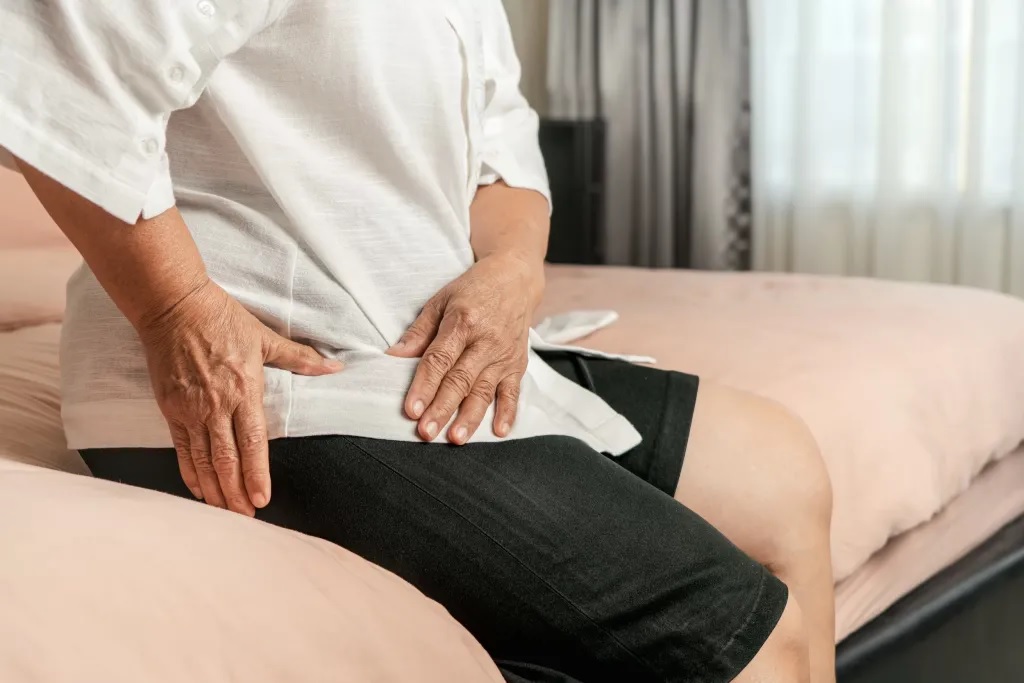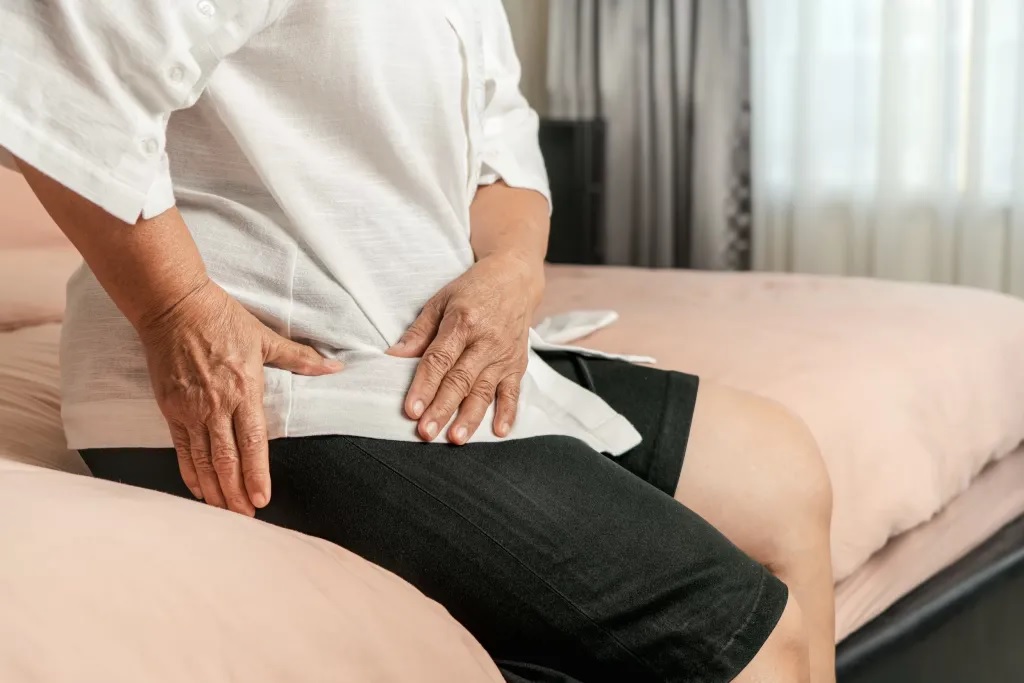
Hip arthrosis, also called coxarthrosis, belongs to a group of diseases called chronic degenerative diseases, that is, diseases that progressively evolve, affecting certain areas or tissues of the body.
In the case of osteoarthritis of the hip, there is progressive wear and tear of the cartilage of the hip joint.
This disease is also characterized by bone neoformation in the region where there was joint wear. These neoformed structures are popularly called parrot beaks.
It is not known for sure why certain groups develop hip arthrosis, but it is known that some situations tend to increase the probability of developing this degenerative disease.
Among these factors are previous diseases of the hip, such as epiphysiolysis, in addition to septic arthritis, congenital dislocation, femoroacetabular impingement, rheumatism, fracture sequelae, as a result of previous surgeries, etc.
This pathology usually affects older people. In the case of previous diseases in the hip, it is called the pathology of secondary hip arthrosis. It is estimated that in the population over 65 years of age approximately 12% have symptomatic osteoarthrosis.
The main symptom of hip arthrosis is pain, located in the groin area. But the patient may report other symptoms such as difficulty performing simple movements such as bending down or bending, as well as joint stiffness and crepitus.
Other symptoms are pain in the buttocks area and the pain may be present even after a period of rest, especially at night.
Difficulty performing simple activities such as walking, climbing stairs, sitting or crossing the legs is present in cases of coxarthrosis.
As coxarthrosis is a progressive disease, the signs and symptoms also have a progressive evolution, that is, they can start in a very mild and little limiting way, but progress to intense and very limiting.
Thus, the first signs of coxarthrosis include joint stiffness, which starts bothering more in the morning, but tends to disappear during the day. In these cases, the limitation of movement is quite small.
With the passage of time and the evolution of the disease, joint involvement also increases and, as a result, the stiffness becomes greater and tends not to disappear during the course of the day. Even the pain can even radiate to other places, such as the lumbar spine, for example.
Rest no longer helps to improve the condition and the patient begins to feel pain in any location or position, feeling very uncomfortable even when lying down or standing still.
The consequence of this is that the patient increasingly decreases the level of movement and when he moves, he limps, trying to transfer the load to the other side of the body that does not present the pathology.
Although this seems like a temporary solution, it actually only worsens the situation, as it leads to muscle weakness in the leg and buttocks, which are extremely important musculature for hip protection.
Thus, it is important that a professional is sought when the first symptoms appear, so that the diagnosis is established and a good treatment plan made, precisely to prevent the natural progression of the disease from occurring.

The diagnosis of this pathology is the responsibility of the orthopaedic doctor in Dwarka. Unfortunately, many patients are slow to seek medical help, believing that the pain and the situation will spontaneously improve, which is not the case with a degenerative disease.
Clinical evaluation is essential, with the professional collecting information about the pain history and medical history of that patient. In addition, some functional exams to check the patient’s muscle capacity in the region are performed.
It is important to check the muscle condition of the leg, buttocks and thigh, to establish the degree of evolution of the disease.
Imaging tests may be ordered, such as X-rays and MRIs. These exams are important to be able to assess the degree of involvement of the joint surface.
The exam of choice for diagnosing hip arthrosis is the AP radiograph of the pelvis, also called pelvic panoramic, and the lateral view of the affected joint.
The other imaging tests are important when the orthopaedic doctor in Delhi wants to eliminate other possible causes of the problem.
The reduction of the joint space, as well as the presence of bony prominences in the region, are factors that are investigated with the analysis of the image exams.
For the treatment of coxarthrosis, it is important to point out that not all cases require surgery, and conservative treatment is an excellent alternative that should be considered because of its positive results.
However, in some cases, depending on the level of joint involvement, surgery becomes unavoidable.
The approach should always be individualized and geared to the patient’s lifestyle and expectations about treatment.
Depending on the degree of pain presented by the patient, the orthopaedic in Dwarka may prescribe appropriate analgesics and anti-inflammatory drugs to reduce the acute pain. This is part of conservative treatment.
Physiotherapy in Dwarka is also indicated for pain reduction, since there are physiotherapeutic techniques that are quite suitable for acute pain.
Among these physical therapy techniques, we can highlight electrothermophototherapeutic resources, such as laser, TENS and ultrasound.
Other techniques include myofascial release and joint mobilizations.
From the reduction of pain, it is possible to focus on a second moment of conservative treatment with the support of physiotherapy in Delhi, seeking muscle strengthening and range of motion.
Activities such as water walking and water activities (hydrotherapy) can also be quite helpful.
At first, the exercises should start without movement, only isometric contraction. Then, with light contraction, then with manual resistance, elastic resistance and finally, resistance with weights.
Appropriate muscle strengthening for patients with coxarthrosis prevents the progression of the disease, as it makes the musculature absorb the necessary load from the patient’s activities, preventing this load from being transferred to the compromised joint region.
The result is an improvement in the patient’s physical condition, with reduced pain and improved functional and movement capacity.
In some cases, due to the degree of involvement of the hip joint, the surgical indication ends up being the best option for the patient with coxarthrosis.
When there is a very large involvement of the joint region or in cases where conservative treatment has failed, the surgical option can be offered to the patient.
It is worth remembering that every surgical process has risks and that the patient will still have to undergo a long physical therapy rehabilitation after the surgery.
Therefore, orthopaedic in Delhi explains to the patient that, although the results of the surgery can be positive, physical therapy rehabilitation is essential.
The most indicated surgery for cases of hip arthrosis is arthroplasty or hip replacement in Delhi, but the indication of the surgical procedure will depend on several factors, such as the patient’s age, etiology, degree of activity and range of motion.
In addition, it is important to check whether the disease is present in only one hip joint or in both.
Surgical procedures can be divided into three types:
– Osteotomies and arthroscopies: change the position of the hip bones;
– Fusion of the hip joint, called arthrodesis;
– Replacement of the hip joint with a prosthesis (arthroplasty).
Obviously, the most invasive surgical procedure of the three described is the replacement of the hip joint with a prosthesis. There is no rule, but in general, less invasive procedures are recommended in early cases.
Arthrodesis is now considered a disused technique. Arthroplasty, on the other hand, is considered one of the greatest successes in medicine in terms of surgery and there has been a lot of progress not only in the surgical technique but also in the materials to be placed as prostheses.
Even so, arthroplasty is indicated for the most severe cases of joint destruction.
*
Be the first to comment.